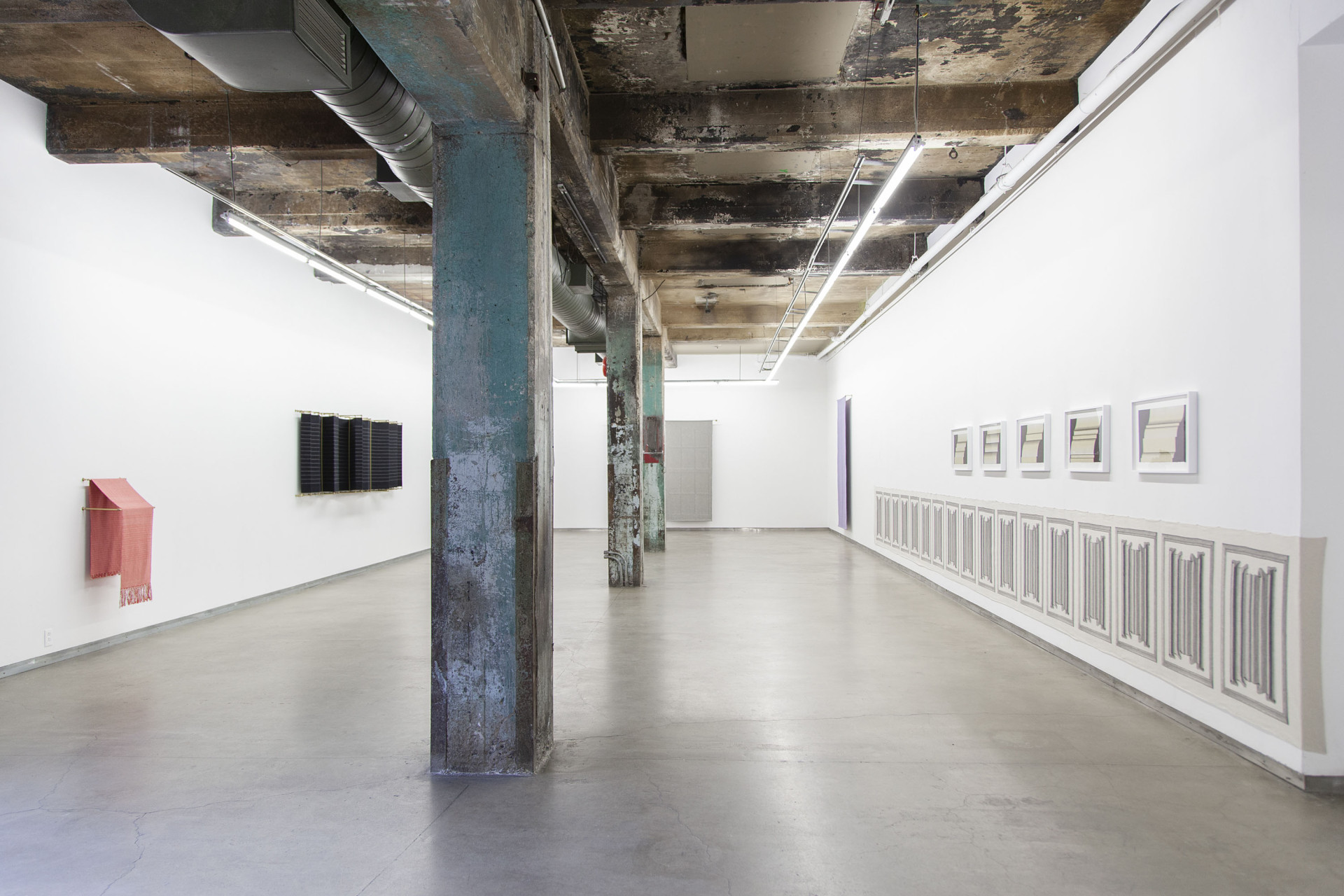
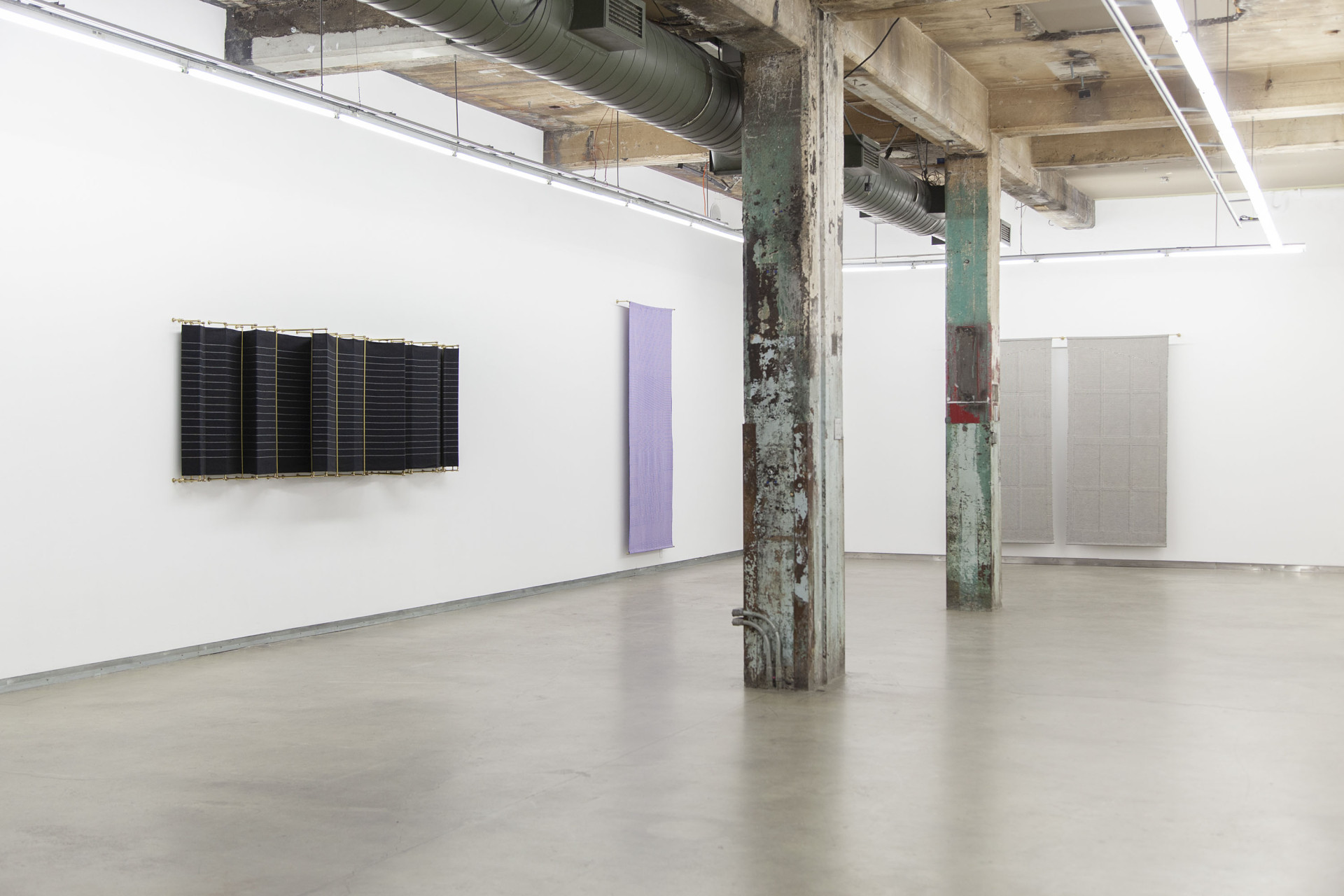
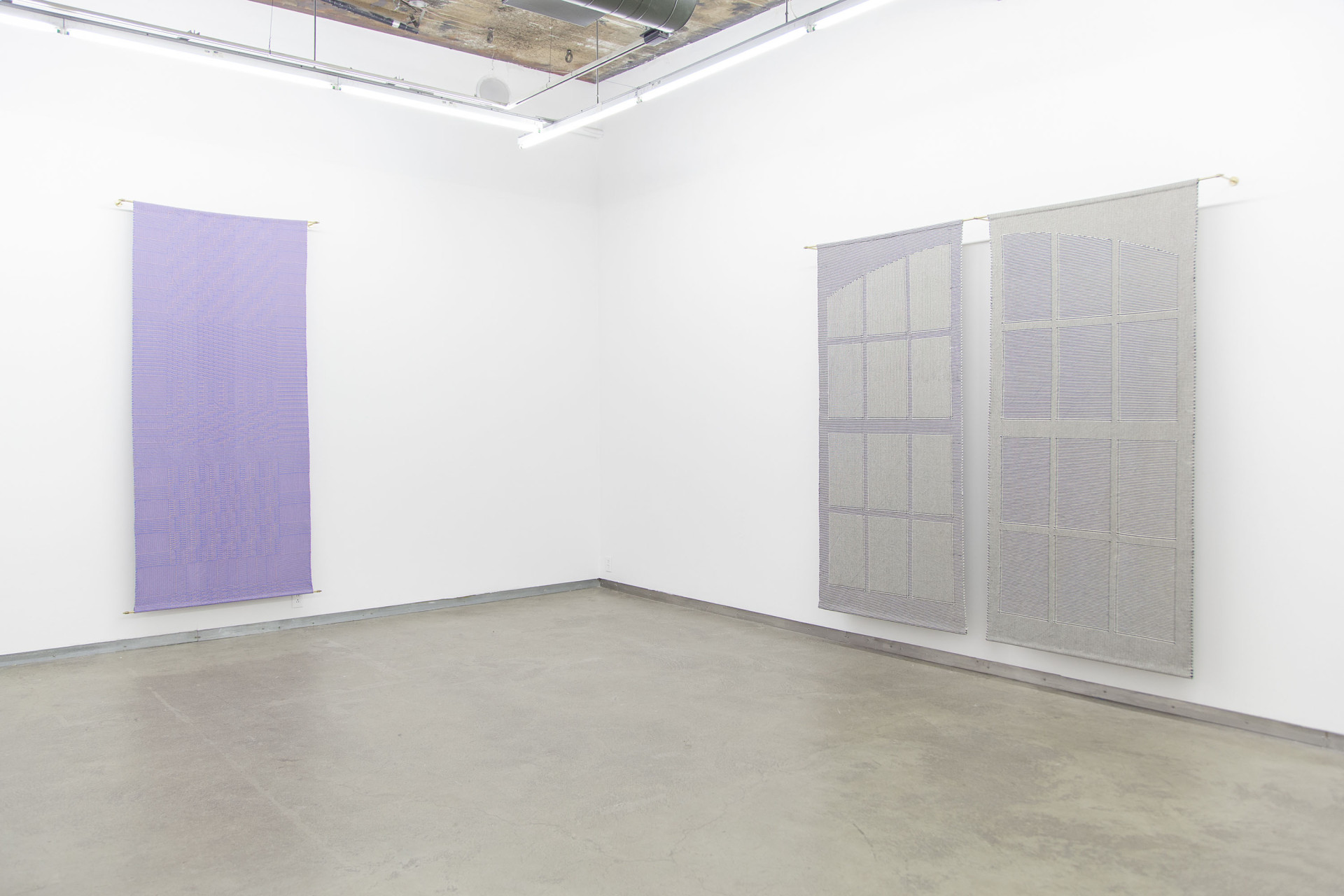
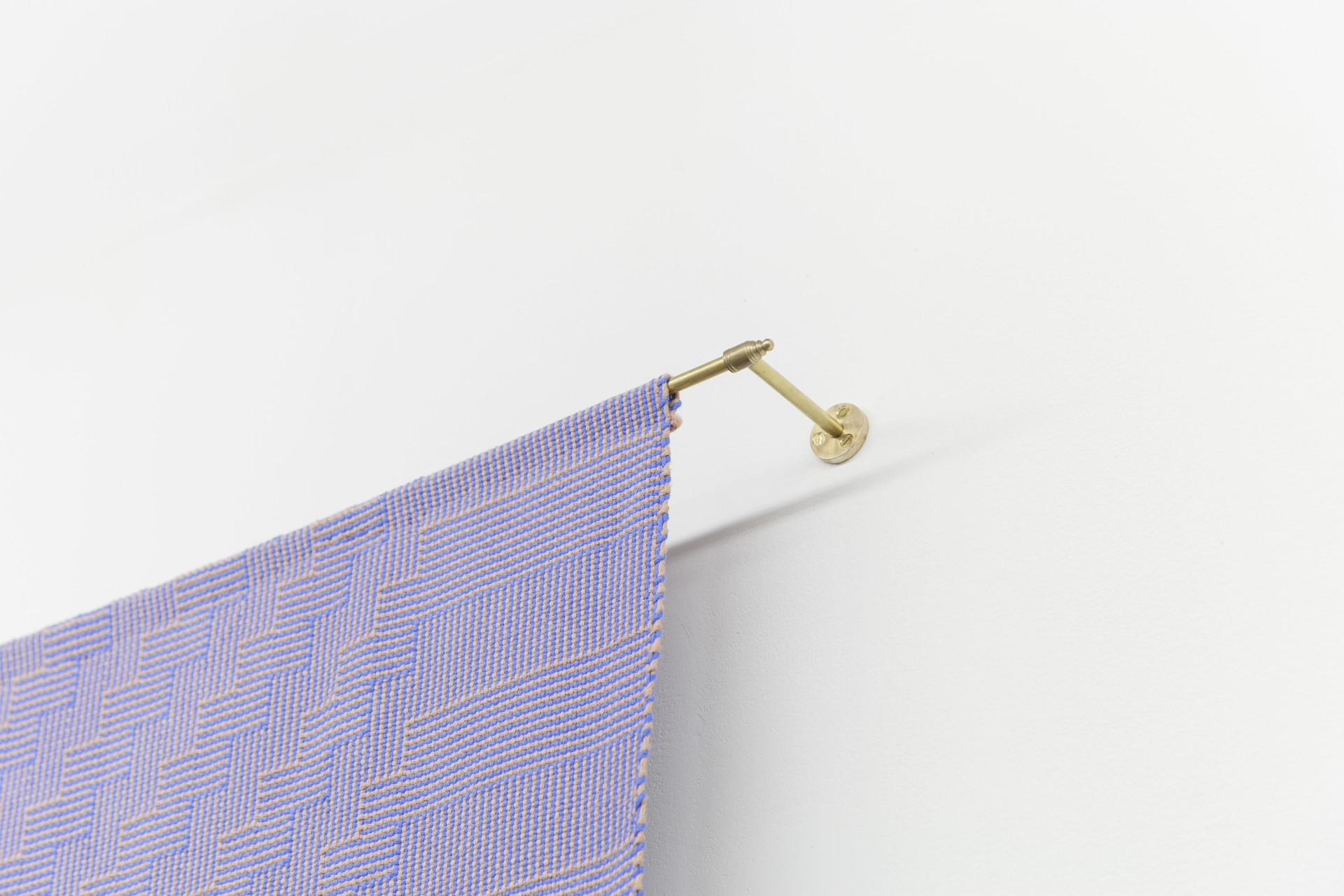
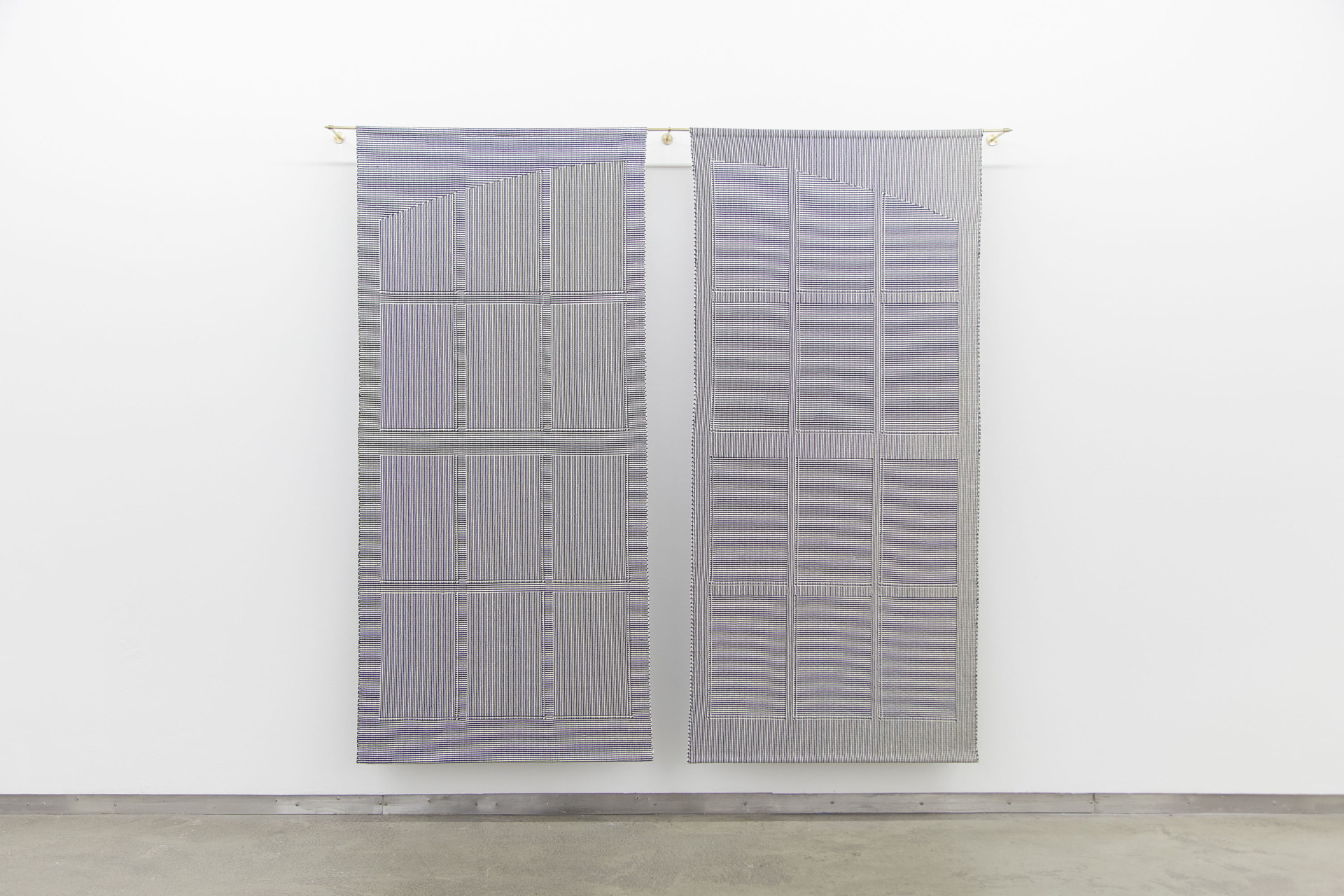
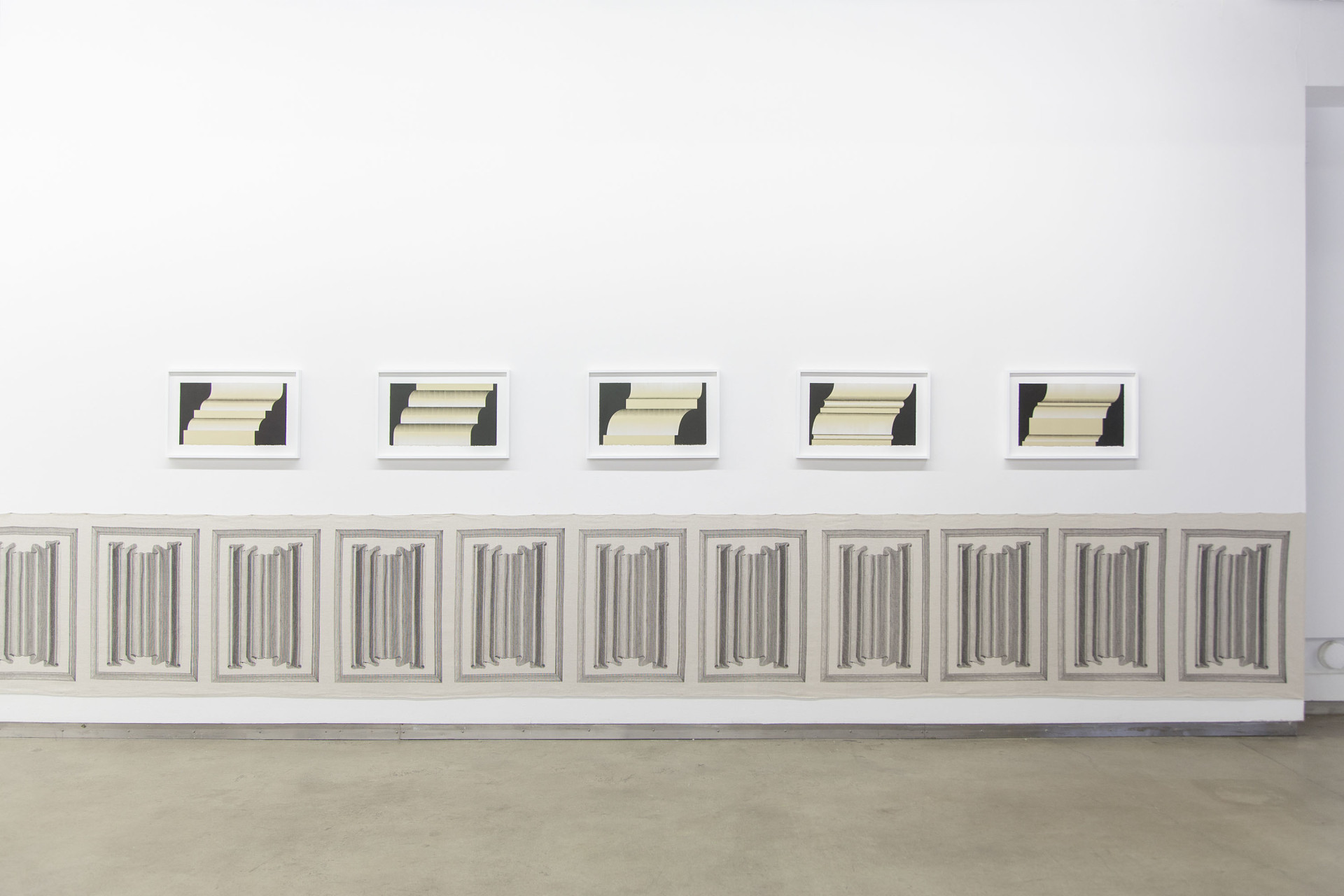


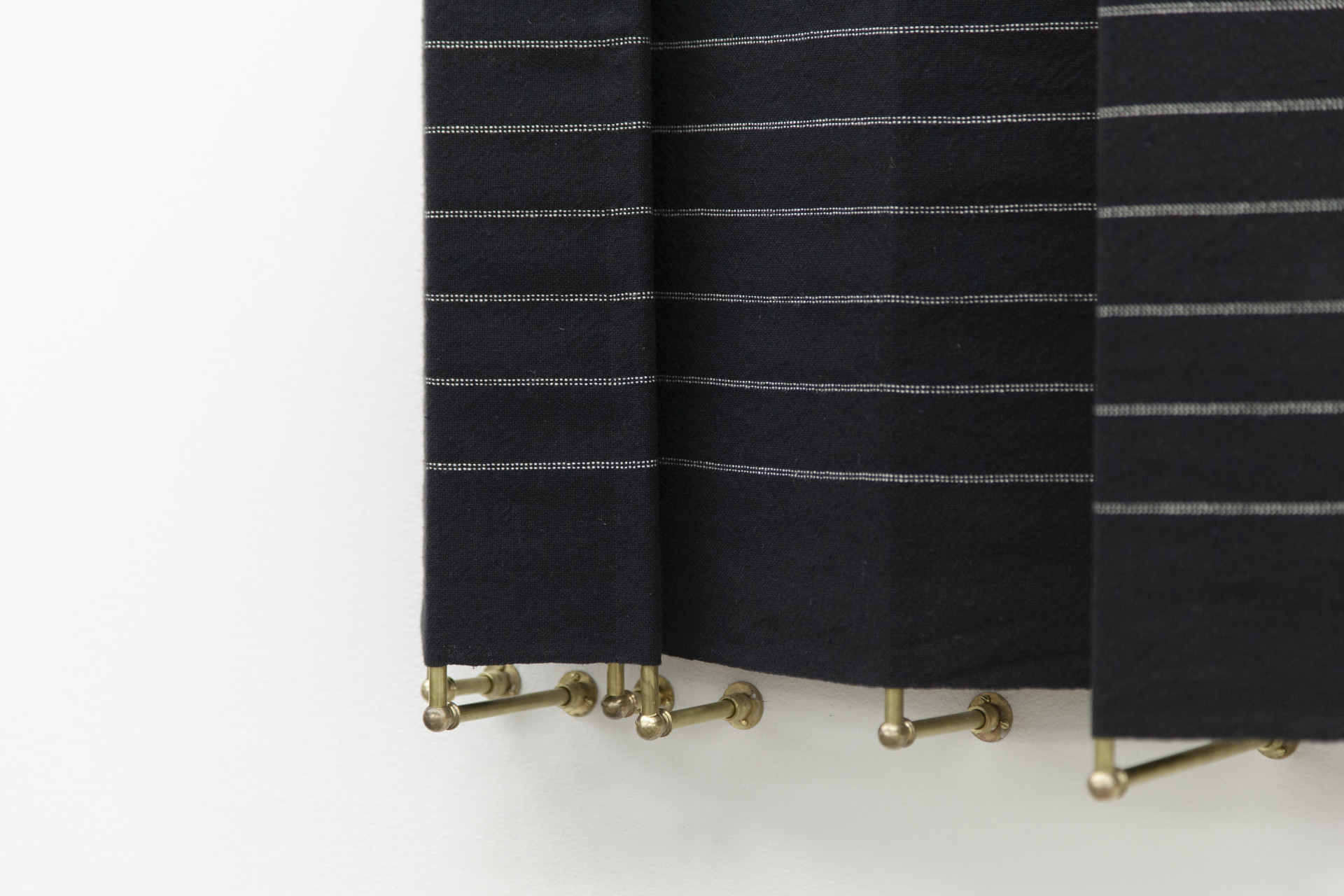
Jeanette Johns’s work asks viewers to pay attention, to become aware of the scientific conventions and logical principles that govern our understanding of the world. Jeanette Johns is particularly interested in those disciplines that render natural phenomena intelligible to us as humans, such as mathematics and geography. Calibrated to the limitations of our senses, the internal operations of the eye, and the effects of gravity, these universalist systems translate our experience of reality. Inspired by architectural drawing, optical illusions, science photography, and loom weaving - a technique she acquired for the production of this body of work, Jeanette Johns creates poetic objects that lay bare the workings of the human mind.
While landscape and architecture have always been at the core of Jeanette Johns’s interests, we might imagine that the works making up Of things as they happen to be were created on a smaller physical scale, under the influence of a daily routine taking place almost exclusively between home and studio. Conceptually, this exhibition points to what was mentally available to the artist over the past pandemic year: domestic space, interior architecture, empty places of gathering. For her, this acute awareness of questions connected to space and perception is embodied in an act of isolation, transformation and reproduction. Any object becomes strange if we stare at it long enough; the mind spins and ends up settling on our surroundings: walls, surfaces, windows, furniture. In the context of a narrow horizon of possibility and a restrictive present moment that seems to stretch out endlessly, Jeanette John’s artistic revelations indeed simply echo things as they happen to be1.
Shadow Windows is a diptych inspired by the motifs of the windows in Jeanette Johns’s studio, located in the residency area of Fonderie Darling, in the building annexed to the exhibition spaces. Woven black and white cotton threads create the illusion of an artificial opening onto the exterior, according to a logic of reciprocity where one feels trapped within a given space. For Shadow Stairs and Shadow Stairs Reflected, Jeanette Johns uses shadow-weaving technique to trace out an interwoven blue and pink staircase. The inclusion of a pew, as well as how the works are mounted — sometimes on the wall like tapestries, other times on a display stand, as with Lecturn Basket — conjure up the atmosphere of a place of worship. In some sense, this classic, almost solemn mode of presentation brings Jeanette Johns’s practice into the fundamental sphere of social ritual that encompasses artworks, bodies, and architecture.
Here, actual space is visually rendered via complex geometric models and decorative ornamentation. Linenfold, a well-know carving technique from the Middle Ages, appears in several forms throughout this body of work: screenprinted in Linenfold for a Wall, in black cotton fabric in Folded Curtain, and alongside modern moulding in the series Moulding Profile2. By transposing one single object or image via different forms and textures, Jeanette Johns highlights the degrees of separation that exist between reality and how it is represented.
In this exhibition, Jeanette Johns is able to shift the image towards three-dimensional space by means of a loom and weaving pattern software, tools that entail complex techniques and endless hours of practice. A symbol of traditional feminine labour, her use of the loom suggests a parallel between women’s work and artists’ work, while also questioning the value of technical know-how and self-learning. In looking at these pieces, we can’t help but imagine the enormous amount of labour behind each one of them. However, we also have the impression that through her use of methodical repetition, Jeanette Johns is able to transform time into something other than itself: work hours become woven squares, lengths of coloured cloth. Of things as they happen to be indeed evokes the idea that time—no matter what we do or don’t do with it—always ends up slipping through
our fingers.
Milly-Alexandra Dery
Translated by Simon Brown
1. The exhibition’s title is taken from novelist Zadie Smith’s book Intimations: Six Essays, published during the pandemic. In the short story Peonies, Smith tells the story of a scientist who gives a piece of charcoal to a monkey kept in captivity, expecting some sort of revelatory or transcendental form of expression from the animal. However, the caged monkey only draws the bars of its cage, causing Smith to remark that “the revelation (turned) out to be one contingency, of a certain set of circumstances — of things as they happen to be” (Smith, p. 3).
2. Linenfold is a type of relief carving used for decorating wooden panels. This technique imitates folded fabric or paper, and was popular in Europe from the 14th century onwards.
